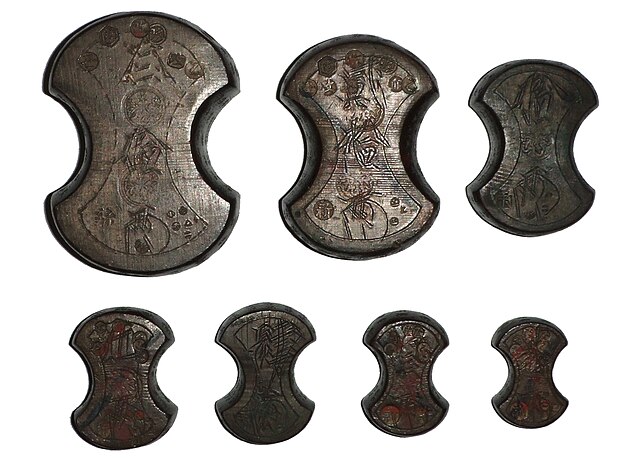Tael, also known as the tahil and by other names, can refer to any one of several weight measures used in East Asia and Southeast Asia. It usually refers to the Chinese tael, a part of the Chinese system of weights and currency. The Chinese tael was standardized to 50 grams in 1959.
(Coin's diameter c. 2.5 cm)
A Chinese silver liǎng (銀兩 / 银两) with stamps Used in Central Asia as a "Silver Hoof" ingot.
Japanese Edo era tael weights for balance scales, made of bronze. In descending size, 30, 20, 10, 5, 4, 3, and 2 tael weights.
Gold lạng (Tael) of Tự Đức.
Chinese units of measurement
Chinese units of measurement, known in Chinese as the shìzhì, are the traditional units of measurement of the Han Chinese. Although Chinese numerals have been decimal (base-10) since the Shang, several Chinese measures use hexadecimal (base-16). Local applications have varied, but the Chinese dynasties usually proclaimed standard measurements and recorded their predecessor's systems in their histories.
A traditional Chinese scale
Bronze ruler from the Han dynasty (206 BCE to CE 220); excavated in Zichang County; Shaanxi History Museum, Xi'an
Chinese measuring tape
Chinese measurement law in 1915








